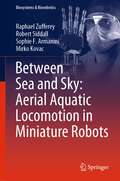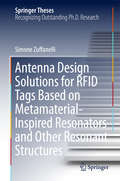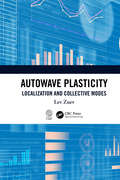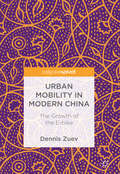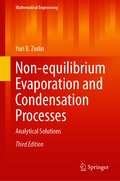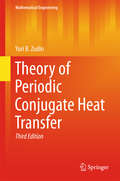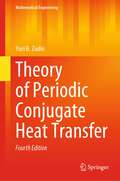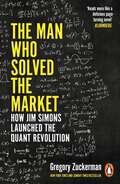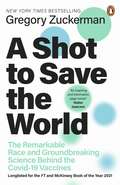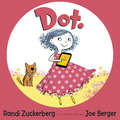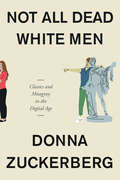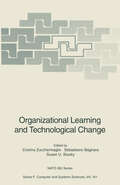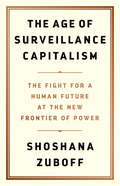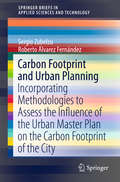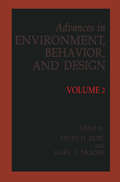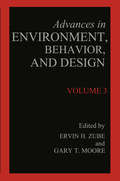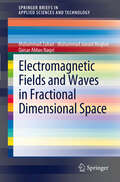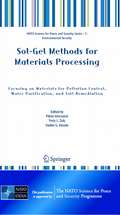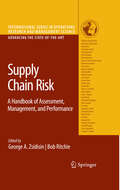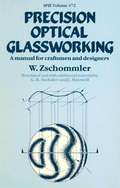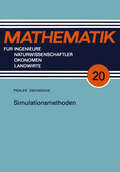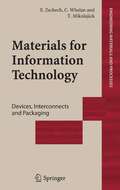- Table View
- List View
Between Sea and Sky: Aerial Aquatic Locomotion in Miniature Robots (Biosystems & Biorobotics #29)
by Raphael Zufferey Robert Siddall Sophie F. Armanini Mirko KovacThis book reports on the state of the art in the field of aerial-aquatic locomotion, focusing on the main challenges concerning the translation of this important ability from nature to synthetic systems, and describing innovative engineering solutions that have been applied in practice by the authors at the Aerial Robotics Lab of Imperial College London. After a general introduction to aerial-aquatic locomotion in nature, and a summary of the most important engineering achievements, the book introduces readers to important physical and mathematical aspects of the multimodal locomotion problem. Besides the basic physics involved in aerial-aquatic locomotion, the role of different phenomena happening in fluids, or those due to structural mechanics effects or to power provision, are presented in depth, across a large dimension range, from millimeters to hundreds of meters. In turn, a practice-oriented discussion on the obstacles and opportunities of miniaturization, for both robots and animals is carried out. This is followed by applied engineering considerations, which describe relevant hardware considerations involved in propulsion, control, communication and fabrication. Different case studies are analyzed in detail, reporting on the latest research carried out by the authors, and covering topics such as propulsive aquatic escape, the challenging mechanics of water impact, and a hybrid sailing and flying aircraft. Offering extensive and timely information on the design, construction and operation of small-scale robots, and on multimodal locomotion, this book provides researchers, students and professionals with a comprehensive and timely reference guide to the topic of aerial-aquatic locomotion, and the relevant bioinspired approaches. It is also expected to inspire future research and foster a stronger multidisciplinary discussion in the field.
Antenna Design Solutions for RFID Tags Based on Metamaterial-Inspired Resonators and Other Resonant Structures (Springer Theses)
by Simone ZuffanelliThis book describes innovative design solutions for radio-frequency identification (RFID) tags and antennas. Focusing mainly on passive ultra-high-frequency (UHF)-RFID tag antennas, it examines novel approaches based on the use of metamaterial-inspired resonators and other resonant structures as radiating elements. It also offers an exhaustive analysis of the radiation properties of several metamaterial-inspired resonators such as the split ring resonator (SRR) and related structures. Further, it discusses in detail an innovative technology for the RFID tagging of optical discs, which has demonstrated a significant improvement over the state of the art and resulted in a patent. By covering the entire research cycle of theory, design/simulation and fabrication/evaluation of RFID tags and antennas, while also reporting on cutting-edge technologies, the book provides graduate students, researchers and practitioners alike with a comprehensive and timely overview of RFID systems, and a closer look at several radiating structures.
Autowave Plasticity: Localization and Collective Modes
by Lev ZuevAutowave Plasticity: Localization and Collective Modes discusses the nature of plastic flow in solids associated with the development of a localized plastic flow. Written by an authority in the field, the author demonstrates how patterns of localized plastic flow are associated with autowave modes that are generated in a deformable sample and delivers a complete work on the subject. Key Features An original work on the nature of plastic flows in solids, particularly metals and crystals Focuses on plastic flow as an autowave process Contains elements of theories, experimental considerations, and numerical modeling This reference will help readers with creating experimental methods to observe or localize plastic flow and with the modeling of plastic flows. It is a valuable reference for graduate students and research specialists working in material science.
Autowave Plasticity: Localization and Collective Modes
by Lev ZuevAutowave Plasticity: Localization and Collective Modes discusses the nature of plastic flow in solids associated with the development of a localized plastic flow. Written by an authority in the field, the author demonstrates how patterns of localized plastic flow are associated with autowave modes that are generated in a deformable sample and delivers a complete work on the subject. Key Features An original work on the nature of plastic flows in solids, particularly metals and crystals Focuses on plastic flow as an autowave process Contains elements of theories, experimental considerations, and numerical modeling This reference will help readers with creating experimental methods to observe or localize plastic flow and with the modeling of plastic flows. It is a valuable reference for graduate students and research specialists working in material science.
Urban Mobility in Modern China: The Growth Of The E-bike
by Dennis ZuevThis book is an empirically rich case-study of what is currently the most popular alternative-fuel vehicle in the history of motorization – the electric two-wheeler (e-bike). The book provides sociological insights into e-bike mobility in China and discusses politics, social practices and larger issues of mobility transition in urban China. Taking an accessible approach to the subject, the book identifies the main sociospatial conflicts regarding the use of e-bikes and discusses why electric two-wheeler mobility is important for the future of urban China and urban transportation globally. This book will be an invaluable read for urban geographers and transportation researchers, but also for academics and general readers interested in Chinese Studies, specifically in the area of urban mobility in China.
Non-equilibrium Evaporation and Condensation Processes: Analytical Solutions (Mathematical Engineering)
by Yuri B. ZudinThis present book is concerned with analytical approaches to statement and solution of problems of non-equilibrium evaporation and condensation. From analytical solutions, one is capable to understand and represent in a transparent form the principal laws, especially in the study of a new phenomenon or a process. This is why analytical methods are always employed on the first stage of mathematical modeling. Analytical solutions are also used as test models for validation of results numerical solutions. Non-equilibrium evaporation and condensation processes play an important role in a number of fundamental and applied problems: laser methods for processing of materials, depressurization of the protection cover of nuclear propulsion units, solar radiation on a comet surface, explosive boiling of superheated liquid, thermodynamic principles of superfluid helium. Analytical relations provide an adequate description of the essence of a physical phenomenon.
Theory of Periodic Conjugate Heat Transfer (Mathematical Engineering #5)
by Yuri B. ZudinThis book provides a detailed yet comprehensive presentation of the theory of periodic conjugate heat transfer. It contains an analytical approach to the effects of thermophysical and geometrical properties of a solid body on the experimentally determined heat transfer coefficient. The main objective of the book is a simplified description of the interaction between a solid body and a fluid as a boundary value problem of the heat conduction equation.This third and extended edition covers Wall's thermal effect on Landau stability, gas bubbles pulsations in fluids, and also the interplay between periodic conjugate heat transfer and non-Fourier heat conduction. The target audience primarily comprises research experts in the field of thermodynamics and fluid dynamics, but the book may also be beneficial for graduate students in engineering.
Theory of Periodic Conjugate Heat Transfer (Mathematical Engineering)
by Yuri B. ZudinThis book presents the theory of periodic conjugate heat transfer in a detailed way. The effects of thermophysical properties and geometry of a solid body on the commonly used and experimentally determined heat transfer coefficient are analytically presented from a general point of view. The main objective of the book is a simplified description of the interaction between a solid body and a fluid as a boundary value problem of the heat conduction equation for the solid body. At the body surface, the true heat transfer coefficient is composed of two parts: the true mean value resulting from the solution of the steady state heat transfer problem and a periodically variable part, the periodic time and length to describe the oscillatory hydrodynamic effects. The second edition is extended by (i) the analysis of stability boundaries in helium flow at supercritical conditions in a heated channel with respect to the interaction between a solid body and a fluid; (ii) a periodic model and a method of heat transfer simulation in a fluid at supercritical pressure and (iii) a periodic quantum-mechanical model for homogeneous vapor nucleation in a fluid with respect to nanoscale effects.
Theory of Periodic Conjugate Heat Transfer
by Yuri B. ZudinHere is a new method for calculating heat transfer in coupled convective-conductive fluid-wall systems under periodical intensity oscillations in fluid flow. The true steady state mean value of the heat transfer coefficient must be multiplied by a newly defined coupling factor, which is always smaller than one and depends on the coupling parameters Biot number, Fourier number as well as dimensionless geometry and oscillation parameters. Includes characteristic solved problems, with tables and diagrams.
Theory of Periodic Conjugate Heat Transfer (Mathematical Engineering)
by Yuri B. ZudinAn original method of investigation of the conjugate conductive-convective problem of periodic heat transfer is developed. The novelty of the approach is that a particular conjugate problem is replaced by a general boundary-value problem for the heat conduction equation in the solid. Within the framework of the hyperbolic model of thermal conductivity, the effect of self-reinforcement of the degree of conjugation by increasing the period of oscillations is found. The processes of hydrodynamics and heat exchange with periodic internal structure are considered: periodic model of turbulent heat transfer, hydrodynamic instability, bubbles dynamics in liquid, and model of evaporating meniscus. The book is intended as a source and reference work for researchers and graduate students interested in the field of conjugate heat transfer.
The Man Who Solved the Market: How Jim Simons Launched the Quant Revolution SHORTLISTED FOR THE FT & MCKINSEY BUSINESS BOOK OF THE YEAR AWARD 2019
by Gregory ZuckermanSHORTLISTED FOR THE FT AND MCKINSEY BUSINESS BOOK OF THE YEAR AWARD 2019'Reads more like a delicious page-turning novel...Put it on your holiday gift list for your favourite hedge-fund honcho' BloombergJim Simons is the greatest moneymaker in modern financial history. His record bests those of legendary investors, including Warren Buffett, George Soros and Ray Dalio. Yet Simons and his strategies are shrouded in mystery. The financial industry has long craved a look inside Simons's secretive hedge fund, Renaissance Technologies and veteran Wall Street Journal reporter Gregory Zuckerman delivers the goods. After a legendary career as a mathematician and a stint breaking Soviet codes, Simons set out to conquer financial markets with a radical approach. Simons hired physicists, mathematicians and computer scientists - most of whom knew little about finance - to amass piles of data and build algorithms hunting for the deeply hidden patterns in global markets. Experts scoffed, but Simons and his colleagues became some of the richest in the world, their strategy of creating mathematical models and crunching data embraced by almost every industry. As Renaissance became a major player in the financial world, its executives began exerting influence on other areas. Simons became a major force in scientific research, education and Democratic politics, funding Hilary Clinton's presidential campaign. While senior executive Robert Mercer is more responsible than anyone else for the Trump presidency, placing Steve Bannon in the campaign, funding Trump's victorious 2016 effort and backing alt-right publication Breitbart. Mercer also impacted the success of the Brexit campaign. For all his prescience, Simons failed to anticipate how Mercer's activity would impact his firm and the world. In this fast-paced narrative, Zuckerman examines how Simons launched a quantitative revolution on Wall Street, and reveals the impact that Simons, the quiet billionaire king of the quants, has had on worlds well beyond finance.
A Shot to Save the World: The Remarkable Race and Ground-Breaking Science Behind the Covid-19 Vaccines
by Gregory ZuckermanThis is the definitive account of the global effort to develop a vaccine for Covid-19, charting the failure and success of every major vaccine in use.When the coronavirus pandemic hit, many of the world's biggest drug and vaccine makers were slow to react or couldn't muster an effective response. It was up to a small group of unlikely and untested scientists and executives to save civilization; a French businessman dismissed by many as a fabulist, a Turkish immigrant with little virus experience, a quirky American Midwesterner obsessed with insect cells, a Boston scientist employing questionable techniques, a British scientist despised by his peers. They scrambled to turn their life's work into life-saving vaccines in a matter of months, each gunning to make the big breakthrough - and to beat each other for the glory that a vaccine guaranteed.A number-one New York Times bestselling author and award-winning Wall Street Journal investigative journalist, Zuckerman takes us inside the top-secret laboratories, corporate clashes and high-stakes government negotiations that led to effective vaccines development and roll out. Meticulously reported and endlessly gripping, this is a dazzling, blow-by-blow chronicle of the most consequential scientific breakthrough of our time. It's a story of courage, genius and heroism, optimism. It's also a tale of heated rivalries, unbridled ambitions, crippling insecurities and unexpected drama.A Shot to Save the World is the story of how science saved the world.
Dot.: Untangling Our Wired Lives
by Randi ZuckerbergDot is a clever little girl, well-versed in how to use electronic devices. Dot knows a lot. She knows how to tap . . . to swipe . . . to share . . . online, but she's forgotten how to do things in the world surrounding her . . .Dot's tech-savvy expertise, mingled with her resourceful imagination, proves Dot really does know lots and lots.
Not All Dead White Men: Classics and Misogyny in the Digital Age
by Donna ZuckerbergSome of the most controversial and consequential debates about the legacy of the ancients are raging not in universities but online, where alt-right men’s groups deploy ancient sources to justify misogyny and a return of antifeminist masculinity. Donna Zuckerberg dives deep to take a look at this unexpected reanimation of the Classical tradition.
Organizational Learning and Technological Change (NATO ASI Subseries F: #141)
by Cristina Zucchermaglio Sebastiano Bagnara Susan U. StuckyWhat the Book Is About This book is about the problem of organizational learning, that is the analysis of organizations conceived as learning systems. In order to survive in a period of a rapid change, organizations must innovate and than to develop and exploit their abilities to learn. The most innovative organizations are those that can respond with great efficiency to internal and external changes. They respond to and generate technological change by acting as effective learning systems. They maximize the learning potential of ongoing and "normal" work activities. The organizational structure and the technology allow members to learn while the organizations itself learns from its members. So organizations reach high levels of innovation when structured to take advantage of the social, distributed, participative, situated processes of learning developed by its members in interaction with the technological environment. Organizations should consider learning as an explicit "productive" objective. They must create integrated learning mechanisms, that encompass technological tools, reward and incentive systems, human resource practices, belief systems, access to information, communication and mobility patterns, performance appraisal systems, organizational practices and structures. The design of efficient learning organizations requires cognitive, technological and social analyses. All the computer-based technologies (e. g. office automation, communication and group decision support) not only those devoted to and used in training activities, have to be considered as tools for organizational learning and innovation.
The Age of Surveillance Capitalism: The Fight for a Human Future at the New Frontier of Power
by Shoshana ZuboffThe challenges to humanity posed by the digital future, the first detailed examination of the unprecedented form of power called "surveillance capitalism," and the quest by powerful corporations to predict and control our behavior.In this masterwork of original thinking and research, Shoshana Zuboff provides startling insights into the phenomenon that she has named surveillance capitalism. The stakes could not be higher: a global architecture of behavior modification threatens human nature in the twenty-first century just as industrial capitalism disfigured the natural world in the twentieth.Zuboff vividly brings to life the consequences as surveillance capitalism advances from Silicon Valley into every economic sector. Vast wealth and power are accumulated in ominous new "behavioral futures markets," where predictions about our behavior are bought and sold, and the production of goods and services is subordinated to a new "means of behavioral modification."The threat has shifted from a totalitarian Big Brother state to a ubiquitous digital architecture: a "Big Other" operating in the interests of surveillance capital. Here is the crucible of an unprecedented form of power marked by extreme concentrations of knowledge and free from democratic oversight. Zuboff's comprehensive and moving analysis lays bare the threats to twenty-first century society: a controlled "hive" of total connection that seduces with promises of total certainty for maximum profit--at the expense of democracy, freedom, and our human future.With little resistance from law or society, surveillance capitalism is on the verge of dominating the social order and shaping the digital future--if we let it.
Carbon Footprint and Urban Planning: Incorporating Methodologies to Assess the Influence of the Urban Master Plan on the Carbon Footprint of the City (SpringerBriefs in Applied Sciences and Technology)
by Sergio Zubelzu Roberto Álvarez FernándezThis book analyzes the relationship between urban development, greenhouse gases and the carbon footprint, and presents the main preventive measures that can be implemented at the design stage. Readers are provided with the knowledge needed to devise a strategy for calculating the carbon footprint of urban planning instruments, as well as a framework for integrating sustainability into the planning phase. Highlighting the importance of preventive and corrective measures, the book includes practical suggestions on how to meet sustainability requirements in urban planning designs, exploring undeveloped land reserves, urban-project design and infrastructure design, and offers a springboard for further research.
Advances in Environment, Behavior and Design: Volume 2 (Advances in Environment, Behavior and Design #2)
by Erwin H. Zube Gary T. MooreThis second volume in the Advances in Environment, Behavior, and Design series follows the pattern of Volume 1. It is organized into six sections user group research, consisting of advances in theory, place research, sociobehavioral research, research and design methods, and research utilization. The authors of the chapters in this volume represent a range of disciplines, including architecture, geography, psychology, social ecology, and urban planning. They also offer international perspectives: Tommy Garling from Sweden, Graeme Hardie from South Africa (re cently relocated to North Carolina), Gerhard Kaminski from the Federal Republic of Germany, and Roderick Lawrence from Switzerland (for merly from Australia). Although most chapters address topics or issues that are likely to be familiar to readers (environmental perception and cognition, facility pro gramming, and environmental evaluation), four chapters address what the editors perceive to be new topics for environment, behavior, and design research. Herbert Schroeder reports on advances in research on urban for estry. For most of us the term forest probably conjures up visions of dense woodlands in rural or wild settings. Nevertheless, in many parts of the country, urban areas have higher densities of tree coverage than can be found in surrounding rural landscapes. Schroeder reviews re search that addresses the perceived and actual benefits and costs associ ated with these urban forests.
Advances in Environment, Behavior, and Design: Volume 3 (Advances in Environment, Behavior and Design #3)
by Erwin H. Zube Gary T. MooreThis third volume in Advances in Environment, Behavior, and Design fol lows the conceptual framework adopted in the previous two volumes (see the Preface to Volume 1, 1987). It is organized into five sections advances in theory, advances in place, user group, and sociobehavioral research, and advances in research utilization. The authors of this volume represent a wide spectrum of the multi disciplinary environment-behavior and design field including architec ture, environmental psychology, facility management, geography, human factors, sociology, and urban design. The volume offers interna tional perspectives from North America (Carole Despres from Canada, several authors from the U.S.), Europe (Martin Krampen from Germany, Martin Symes from England), and New Zealand (David Kernohan). More so than any of the previous volumes, they are drawn from both academia and professional practice. While there continues to be a continuity in format in the series, we are actively exploring new directions that are on the cutting edges of the field and bode well for a more integrated future. This volume will fur ther develop the themes of design and professional practice to comple ment the earlier emphases on theory, research, and methods.
Electromagnetic Fields and Waves in Fractional Dimensional Space (SpringerBriefs in Applied Sciences and Technology)
by Muhammad Zubair Muhammad Junaid Mughal Qaisar Abbas NaqviThis book presents the concept of fractional dimensional space applied to the use of electromagnetic fields and waves. It provides demonstrates the advantages in studying the behavior of electromagnetic fields and waves in fractal media. The book presents novel fractional space generalization of the differential electromagnetic equations is provided as well as a new form of vector differential operators is formulated in fractional space. Using these modified vector differential operators, the classical Maxwell's electromagnetic equations are worked out. The Laplace's, Poisson's and Helmholtz's equations in fractional space are derived by using modified vector differential operators.
Sol-Gel Methods for Materials Processing: Focusing on Materials for Pollution Control, Water Purification, and Soil Remediation (NATO Science for Peace and Security Series C: Environmental Security)
by Yuriy L. Zub Vadim G. KesslerSol-gel processing is a soft-chemistry method to obtain functional materials at low temperatures. This route can be used to produce very sophisticated nanomaterials and to tailor the materials to very specific applications. Adsorption and detection of pollutants, water purification and soil remediation represent challenging fields of application that can be exploited by sol-gel materials. In this volume several contributions from invited speakers and participants at the NATO advanced research workshop on "Sol-gel approaches to materials for pollution control, water purification and soil remediation", which has been held in Kiev, Ukraine on October 2007, are reported. The book offers a wide and updated overview of the most advanced sol-gel methods for materials processing and at the same time presents several case studies concerning possible solutions for environmental issues. General articles on sol-gel from the invited speakers and focused research articles allow getting inside sol-gel applications on this very important field.
Supply Chain Risk: A Handbook of Assessment, Management, and Performance (International Series in Operations Research & Management Science #124)
by George A. Zsidisin Bob RitchieRisk is of fundamental importance in this era of the global economy. Supply chains must into account the uncertainty of demand. Moreover, the risk of uncertain demand can cut two ways: (1) there is the risk that unexpected demand will not be met on time, and the reverse problem (2) the risk that demand is over estimated and excessive inventory costs are incurred. There are other risks in unreliable vendors, delayed shipments, natural disasters, etc. In short, there are a host of strategic, tactical and operational risks to business supply chains. Supply Chain Risk: A Handbook of Assessment, Management, and Performance will focus on how to assess, evaluate, and control these various risks.
Precision Optical Glassworking: A Manual For The Manufacture, Testing And Design Of Precision Optical Components And The Training Of Optical Craftsmen (Spie Ser. #Vol. 472)
by W. ZschommlerSimulationsmethoden (Mathematik für Ingenieure und Naturwissenschaftler, Ökonomen und Landwirte)
by Hans-Ulrich ZschiescheIm allgemeinsten Sinne versteht man unter Simulation die Untersuchung eines Prozesses oder eines Systems mit Hilfe eines Ersatzsystems. Häufig zitierte Beispiele für derartige Simulationen sind Simulatoren bei der Ausbildung von Flugzeugpiloten oder in Fahrschulen. Die Gründe für ein derartiges Vorgehen liegen auf der Hand. Es sind in erster Linie geringere Kosten und geringere Gefahr; in vielen prakiischen Fällen sind darüber hinaus Untersuchungen am realen System gar nicht möglich, wie spätere Beispiele zeigen werden. Wichtige Ersatzsysteme für Simulationen stellen die mathematischen Modelle dar, die den zu untersuchenden Prozeß beschreiben und die auf einem Digitalrechner aus gewertet werden. In einem solchen Falle spricht man von digitaler Simulation oder Simulation im engeren Sinne. Im folgenden werden wir uns mi~ derartigen Simula tionen beschäftigen. Meist tritt noch ein weiteres Moment hinzu, nämlich das Experimentieren mit einem solchen Modell. Das ist darin begründet, daß die Modelle oft sehr kompliziert und umfangreich sind, so daß keine expliziten mathematischen Methoden zur Be stimmung von Optimallösungen vorliegen; diese können dann nur über Varianten rechnungen ermittelt werden. Aus diesen Gründen spricht man im Zusammenhang mit der Simulation oft auch von experimenteller Mathematik.
Materials for Information Technology: Devices, Interconnects and Packaging (Engineering Materials and Processes)
by Ehrenfried Zschech Caroline Whelan Thomas MikolajickThis book provides an up to date survey of the state of the art of research into the materials used in information technology, and will be bought by researchers in universities, institutions as well as research workers in the semiconductor and IT industries.
